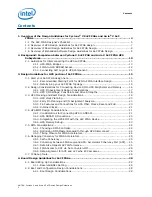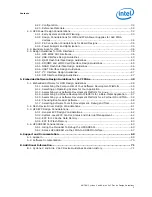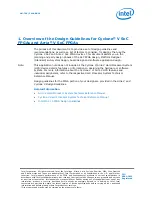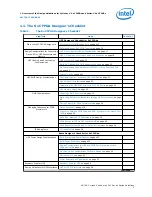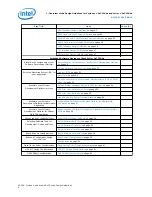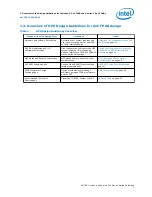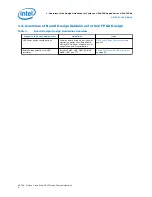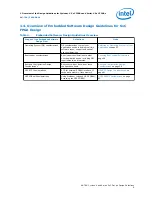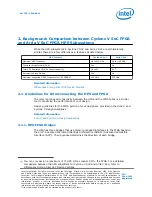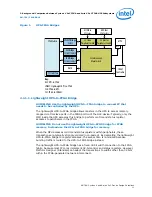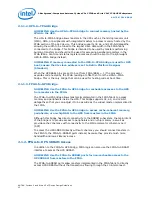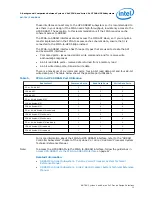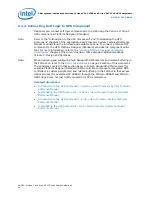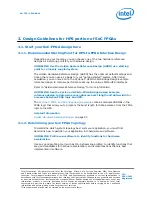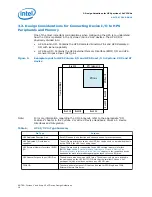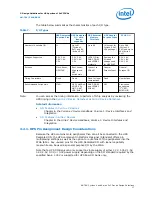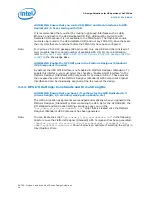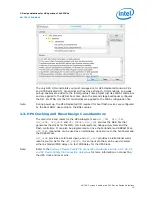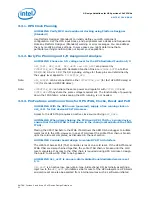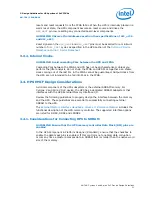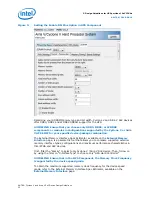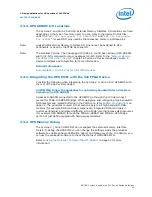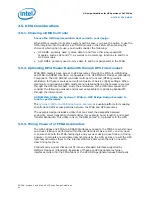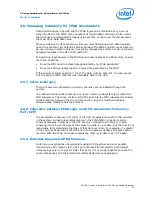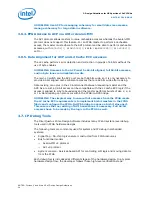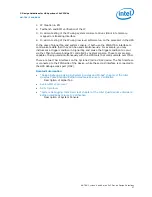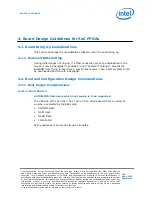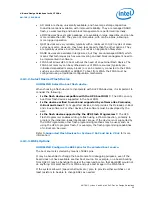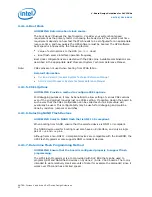
3. Design Guidelines for HPS portion of SoC FPGAs
3.1. Start your SoC-FPGA design here
3.1.1. Recommended Starting Point for HPS-to-FPGA Interface Design
Depending on your topology, you can choose one of the two hardware reference
designs as a starting point for your hardware design.
GUIDELINE: Use the Golden System Reference Design (GSRD) as a starting
point for a loosely coupled system.
The Golden Hardware Reference Design (GHRD) has the optimum default settings and
timing that you can use as a basis for your "getting started" system. After initial
evaluation, you can move on to the Cyclone V HPS-to-FPGA Bridge Design Example
reference design to compare performance among the various FPGA-HPS interfaces.
Refer to "Golden Hardware Reference Design" for more information.
GUIDELINE: Use the Cyclone V HPS-to-FPGA Bridge Design Example
reference design to determine your optimum burst length and data-width for
accesses between FPGA logic and HPS.
Cyclone V FPGA-to-HPS bridge design example
contains modular SGDMAs in the
FPGA logic that allow you to program the burst length for data accesses from the FPGA
logic to the HPS.
Related Information
Golden Hardware Reference Design
3.1.2. Determining your SoC FPGA Topology
To determine which system topology best suits your application, you must first
determine how to partition your application into hardware and software.
GUIDELINE: Profile your software to identify functions for hardware
acceleration.
Use any good profiling tool (such as DS-5 streamline profiler) to identify functions that
are good candidates for hardware acceleration, and isolate functions that are best
implemented in software.
AN-796 | 2018.06.18
Intel Corporation. All rights reserved. Intel, the Intel logo, Altera, Arria, Cyclone, Enpirion, MAX, Nios, Quartus
and Stratix words and logos are trademarks of Intel Corporation or its subsidiaries in the U.S. and/or other
countries. Intel warrants performance of its FPGA and semiconductor products to current specifications in
accordance with Intel's standard warranty, but reserves the right to make changes to any products and services
at any time without notice. Intel assumes no responsibility or liability arising out of the application or use of any
information, product, or service described herein except as expressly agreed to in writing by Intel. Intel
customers are advised to obtain the latest version of device specifications before relying on any published
information and before placing orders for products or services.
*Other names and brands may be claimed as the property of others.


